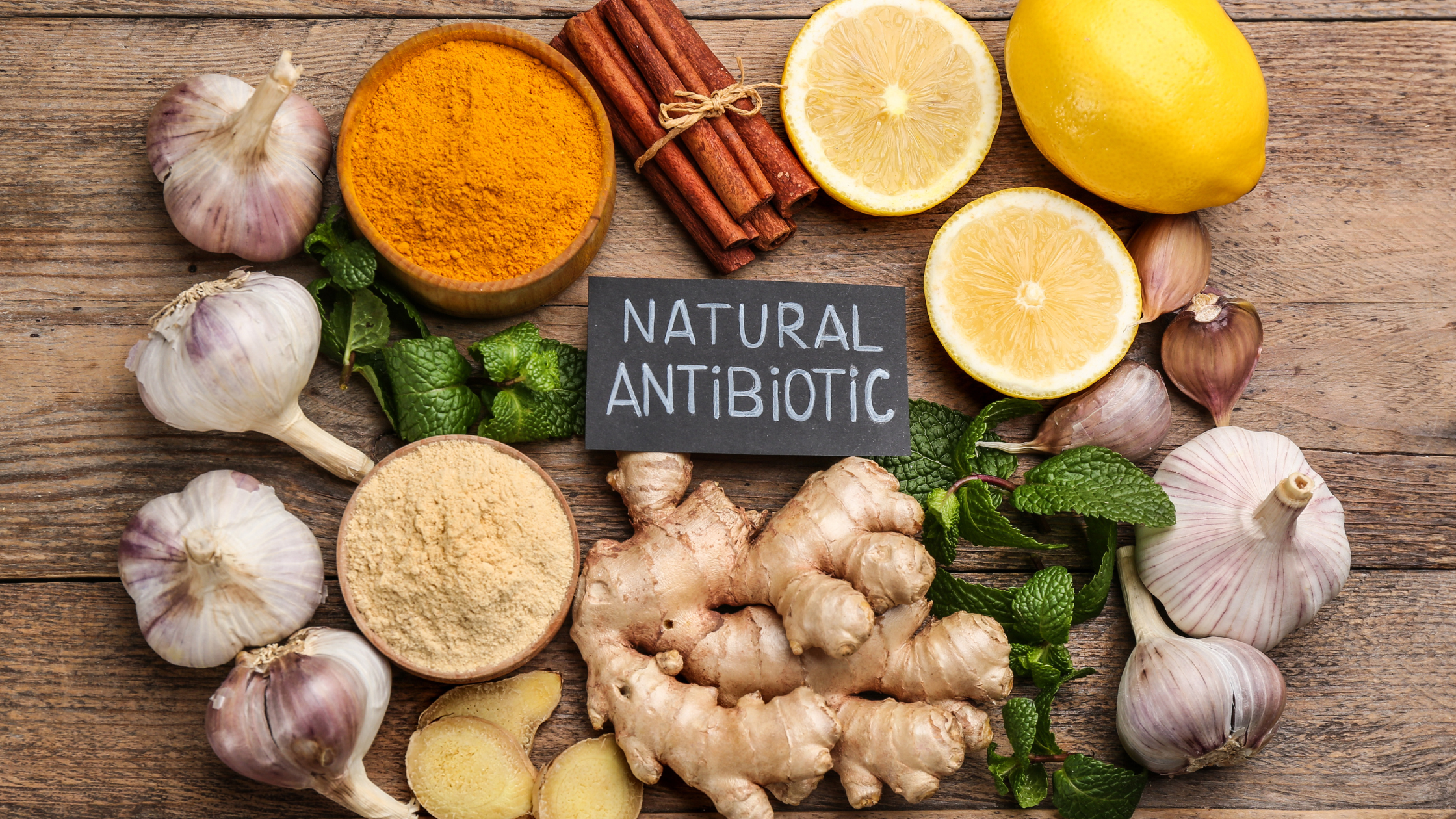Content
The use of herbal medicines instead of antibiotics to treat microbial infections has attracted attention in recent years. Although antibiotics are necessary to save lives when used correctly, they also have numerous side effects. As the topic of antibiotic resistance becomes increasingly relevant to modern medicine, research into effective natural and herbal antimicrobials is on the rise.
What are the causes of increasing antibiotic resistance?
Antibiotics are an important component of conventional medicine, and increasing antibiotic resistance is a pressing global threat to human health. According to statistical analysis, antibiotic resistance is associated with the death of 1.27 million people worldwide and almost 5 million deaths in 2019.
Antibiotic resistance develops due to the overuse and abuse of antibiotics, leading to the emergence of drug-resistant pathogens. As drug-resistant pathogens continue to evolve, physicians are faced with the inability to treat life-threatening infectious diseases. Due to the ongoing threat of antibiotic resistance, doctors and researchers are turning to herbal and natural antimicrobials for treatment.
Which herbs are considered powerful natural antibiotics?
Herbal medicine offers promising benefits in treating microbial infections. Plants contain numerous bioactive compounds that can synergistically target microbial pathogens, making them a valuable alternative to antibiotics. Among the herbal antimicrobial agents widely studied by science are echinacea, garlic, oregano, as well as the hydrastis plant.
1. Garlic (Allium sativa)
Garlic has been known for centuries as an edible plant with proven efficacy against bacterial infections. Its main active ingredient, allicin, is responsible for its powerful antibacterial properties. Allicin works against both gram-negative and gram-positive bacteria. It interferes with microbial processes, increases the activity of immune cells and modulates the immune system, making it particularly effective in treating cold and flu symptoms. In addition, allicin has been shown to be useful in the treatment of antibiotic-resistant bacteria, underscoring its importance in modern medicine.
2. Echinacea (Echinacea purpurea)
Echinacea is a flowering plant that originates from North America and is known for its medicinal properties. It is widely used to support the immune system and treat various respiratory bacterial infections. Echinacea has an anti-inflammatory effect, which contributes to its effectiveness in dealing with various types of infections.
The herb has the ability to modulate the immune response by reversing the stimulation of pro-inflammatory cytokines. This allows it to reduce inflammation and help fight microbial pathogens. Thanks to these properties, Echinacea can be useful in the treatment of various infections. It is used in the treatment of urinary tract infections, vaginal yeast infections, ear infections, hay fever and wound healing.
3. Oil of oregano (Origanum vulgare)
Oregano is a well-known herb widely used in the treatment of bacterial infections. The medicinal properties of oregano are due to its essential oil, which contains the active ingredients carvacrol and thymol. These components have proven anti-inflammatory, antibacterial and antioxidant properties. They achieve their effect by inhibiting bacterial enzymes, preventing biofilm formation and damaging the bacterial cytoplasmic membrane. Oil of oregano is extremely effective in fighting respiratory infections, skin diseases and digestive disorders.
4. Hydrastis (Hydrastis canadensis)
Goldenseal, also known as hydrastis, is a plant native to North America that is well known for its broad-spectrum antimicrobial effects against bacteria, fungi, and protozoa. The main active ingredient in goldenseal is berberine, which studies have shown to have multiple medicinal properties, including anti-inflammatory, antimicrobial, neuroprotective, and improving insulin resistance.
Goldenseal is also used in the treatment of seasonal colds and flu, helping to relieve symptoms and shorten the duration of the illness. In addition, the plant is effective for sinusitis and digestive disorders, including infections caused by the bacterium H. pylori. Its antimicrobial, anti-inflammatory and other benefits make it useful for treating a wide range of health problems.
Incorporating herbal antimicrobials into treatment plans
Integrating herbal medicine into treatment plans requires attention to dosage, potential interactions with other pharmaceuticals, and consideration of the patient’s holistic health profile. When formulating the treatment plan, specialists must take into account the main co-morbidities of the particular person.
It is also important to consider the bioavailability of different herbal preparations. Most herbal remedies come in capsule, tincture, or tea form. It is best to choose herbal antimicrobials with standardized extracts to ensure an adequate concentration of active ingredients.
The role of diet and lifestyle in supporting antimicrobial therapy
Optimizing the effectiveness of antimicrobial therapy involves not only herbal medicine but also lifestyle changes. In functional medicine, a comprehensive approach is needed to improve immune function and fight infection while addressing the root cause of disease. A balanced diet rich in essential nutrients is key to building a strong immune system.
It is important to include a variety of foods rich in vitamins C, D, A, and E, as well as zinc and omega-3 fatty acids in your antimicrobial treatment plan. There is an abundance of phytonutrients commonly found in colorful fruits and vegetables. It is imperative to avoid pro-inflammatory foods such as saturated fats and processed sugars.
Other important factors in maintaining your body through antimicrobial therapy are sound sleep, stress management, adequate aerobic exercise, and good hydration.
To improve your immune health, it is recommended to sleep 7-9 hours a night. In addition, monitoring stress levels is critical for immune health when undergoing antimicrobial treatment. Chronic stress causes a decrease in immune cells and an increase in the stress hormone (cortisol), which contributes to higher levels of inflammation. By practicing stress management techniques such as meditation, people can improve their overall well-being and support their immune system.
In conclusion
The growing concern about antibiotic resistance motivates specialists to research and apply herbal and natural antimicrobial agents. As clinical research increases, the use of herbal medicine in the fight against microbial resistance represents a promising approach to address the problem.
Sources:
- American Heart Association. (2020, January 9). Mediterranean Diet. www.heart.org. https://www.heart.org/en/healthy-living/healthy-eating/eat-smart/nutrition-basics/mediterranean-diet
- Anderson, S. (2022, July 8). Over 40% of Americans are Deficient in This Vitamin: Here are the Symptoms to Look Out For. Rupa Health. https://www.rupahealth.com/post/what-causes-vitamin-d-deficiency
- Anand, Uttpal, et al. “A Comprehensive Review on Medicinal Plants as Antimicrobial Therapeutics: Potential Avenues of Biocompatible Drug Discovery.” Metabolites, vol. 9, no. 11, Nov. 1 2019, p. 258, https://doi.org/10.3390/metabo9110258.
- Arreola, R., Quintero-Fabián, S., López-Roa, RI, Flores-Gutiérrez, EO, Reyes-Grajeda, JP, Carrera-Quintanar, L., & Ortuño-Sahagún, D. (2015). Immunomodulation and Anti-Inflammatory Effects of Garlic Compounds. Journal of Immunology Research, 2015(401630), 1–13. https://doi.org/10.1155/2015/401630
- Besedovsky, L., Lange, T., & Born, J. (2012). Sleep and immune function. Pflügers Archiv – European Journal of Physiology, 463(1), 121–137. https://doi.org/10.1007/s00424-011-1044-0
- Brinker, FJ (2010). Herbal contraindications and drug interactions plus herbal adjuncts with medicines. Eclectic Medical Publications.


